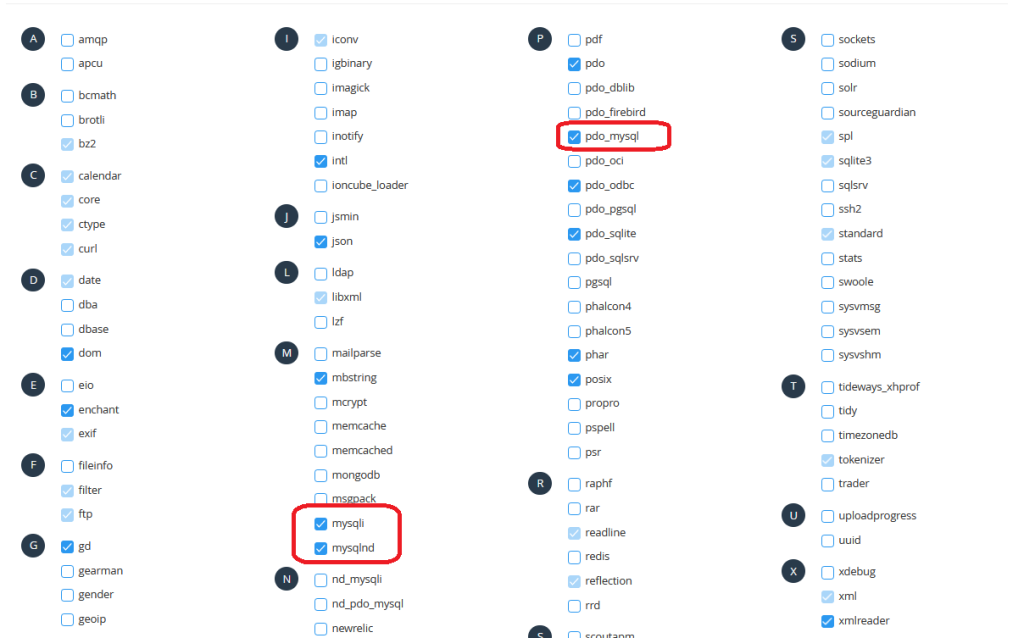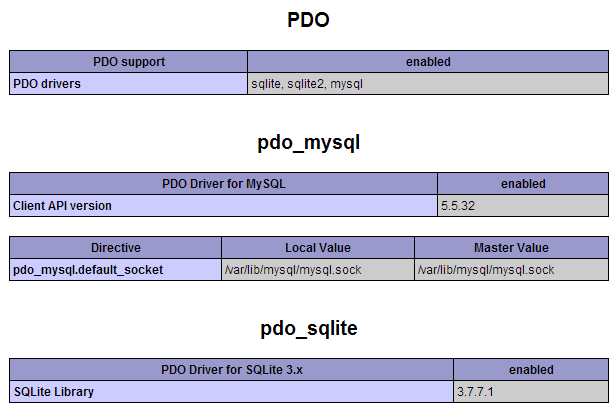Fix MySQL Extension missing Error in WordPress ” Your PHP Installation Appears to Be Missing the MySQL Extension Which Is Required by WordPress ” Error typically occurs when the MySQL extension is not enabled or installed in your PHP configuration.

Here are the steps to fix this issue in cPanel:
1. Check PHP Version
First, ensure you’re using a compatible PHP version for your WordPress installation. WordPress recommends using PHP version 7.4 or higher.

2. Enable MySQL Extension in PHP
Most modern versions of PHP use the mysqli or pdo_mysql extension instead of mysql. Here’s how to enable the necessary extension to Fix MySQL Extension missing Error in WordPress
Using cPanel:
- Log in to cPanel:
Go to your cPanel dashboard.

- Find PHP Selector:
Locate the “Select PHP Version” or “PHP Configuration” option. This is usually found under the “Software” or “Programming” section.

- Select PHP Version:
Choose the PHP version you are using for your WordPress installation.

- Enable Extensions:
Ensure thatmysqliand/orpdo_mysqlare checked/enabled. You might also want to enablemysqlnd.

- Save Changes:
Click the “Save” or “Apply” button to save your changes to Fix MySQL Extension missing Error in WordPress
3. Verify Extension in PHP Configuration
If you don’t see the PHP Selector in cPanel, you can manually verify and enable the extension by editing the php.ini file.
- Access File Manager:
Go to the File Manager in cPanel. - Locate php.ini File:
Find and edit thephp.inifile in your root directory or in the directory specified by your hosting provider. - Edit php.ini:
Look for lines containingmysqliandpdo_mysql. Uncomment them (remove the;at the beginning of the line) or add them if they are missing:
extension=mysqli
extension=pdo_mysql
- Save and Exit:
Save thephp.inifile and exit the editor. - Restart Web Server (if necessary):
Some changes may require a web server restart. If you have access to restart the web server, do so to Fix MySQL Extension missing Error in WordPress.
4. Verify PHP Configuration
You can create a phpinfo.php file to verify that the extensions are enabled to Fix MySQL Extension missing Error in WordPress.
- Create phpinfo.php File:
In your WordPress root directory, create a new file namedphpinfo.php. - Add the Following Content:
<?php phpinfo(); ?>
- Save the File and Access It:
Save the file and access it through your web browser by navigating tohttp://yourdomain.com/phpinfo.php. - Check for MySQLi and PDO MySQL:
Look formysqliandpdo_mysqlin the output to confirm they are enabled.

5. Remove phpinfo.php File after Fix MySQL Extension missing Error in WordPress
For security reasons, delete the phpinfo.php file after verifying the configuration after Fix MySQL Extension missing Error in WordPress.
By following these steps, you should be able to resolve the “Your PHP Installation Appears to be Missing the MySQL Extension which is Required by WordPress” error.
To avoid encountering the “Your PHP installation appears to be missing the MySQL extension which is required by WordPress” error in the future, it’s important to take several proactive measures. Here are the necessary precautions:
1. Regularly Update PHP and Extensions
- Stay Up-to-Date: Ensure that both PHP and its extensions are regularly updated to the latest stable versions. This can help prevent & Fix MySQL Extension missing Error in WordPress.
- Use Managed Hosting: Consider using managed WordPress hosting providers that automatically handle PHP updates and configuration.
2. Monitor PHP Configuration
- Check PHP Extensions: Regularly verify that essential PHP extensions (
mysqli,pdo_mysql, andmysqlnd) are enabled. - Create Monitoring Scripts: You can create simple scripts to periodically check the status of your PHP configuration and alert you to any changes & Fix MySQL Extension missing Error in WordPress.
3. Backup Configuration Files
- Backup
php.ini: Keep backups of yourphp.iniconfiguration files. This allows for quick restoration if settings are lost or changed. - Document Configuration: Maintain documentation of your PHP and server configurations, including a list of enabled extensions.
4. Use PHP Management Tools in cPanel
- Utilize cPanel Tools: Use cPanel’s PHP Selector or similar tools to manage and verify PHP configurations. These tools simplify the process of enabling or disabling PHP extensions.
- Check Compatibility: Ensure that the selected PHP version is compatible with the version of WordPress you are using.
5. Regular WordPress Maintenance
- Update WordPress: Always keep your WordPress installation up to date to ensure compatibility with the latest PHP versions and extensions.
- Check Plugins and Themes: Ensure that your plugins and themes are also updated and compatible with your PHP version.
6. Security and Monitoring
- Security Plugins: Use security plugins to monitor your WordPress site for unauthorized changes.
- Server Monitoring: Implement server monitoring to alert you to configuration changes or issues that might affect PHP or WordPress functionality.
7. Use Version Control
- Version Control for Configurations: Use version control systems (e.g., Git) for tracking changes in your configuration files. This can help quickly identify and Fix MySQL Extension missing Error in WordPress.
8. Consult Hosting Provider
- Hosting Support: Regularly consult with your hosting provider to ensure that your hosting environment is optimized for WordPress and that all necessary PHP extensions are supported.
- Service Level Agreement (SLA): Check the SLA for your hosting plan to ensure it includes support for PHP configuration and updates.
By taking these precautions, you can significantly reduce the likelihood of encountering the “Your PHP installation appears to be missing the MySQL extension which is required by WordPress” error and ensure a more stable and secure WordPress environment.

